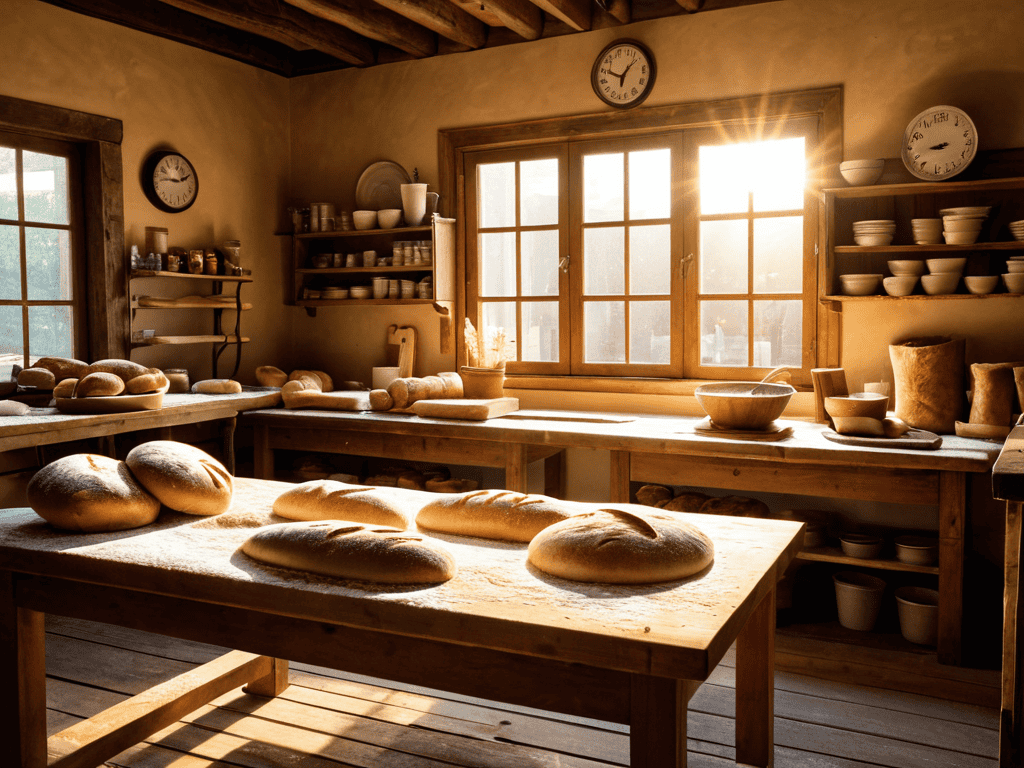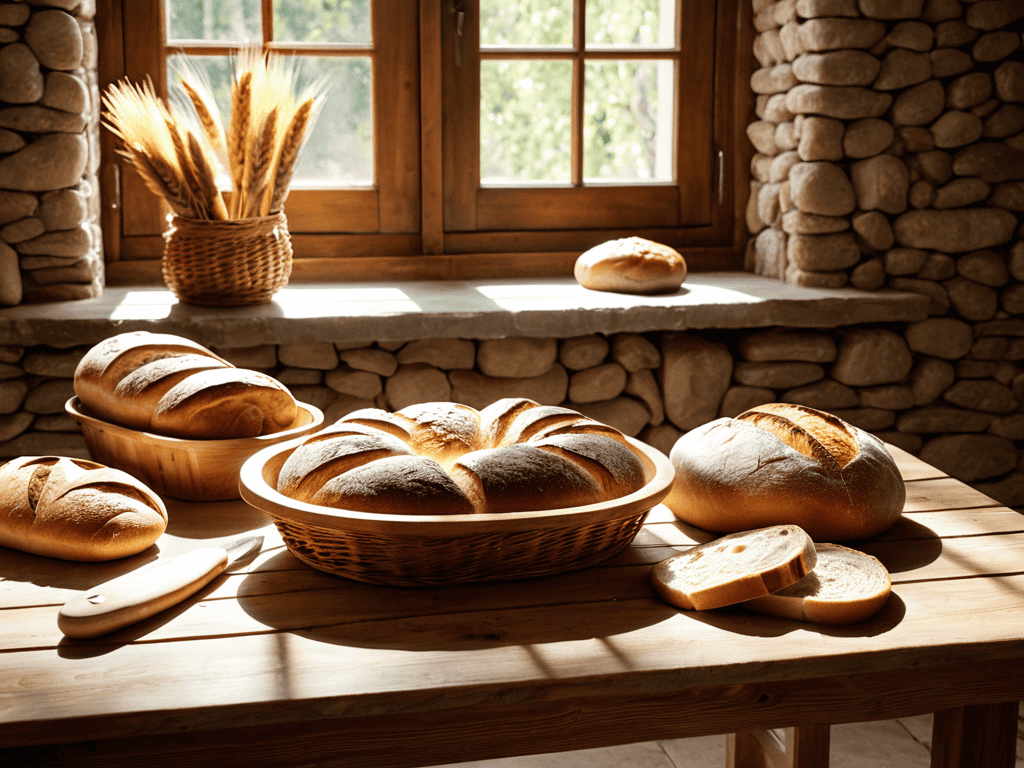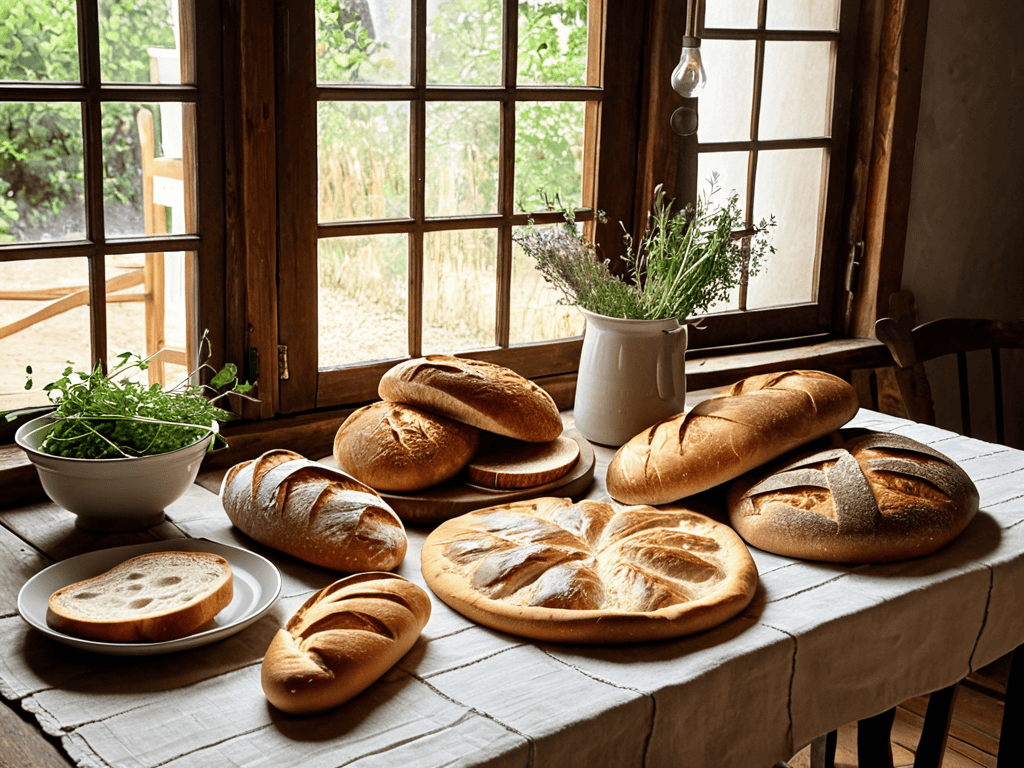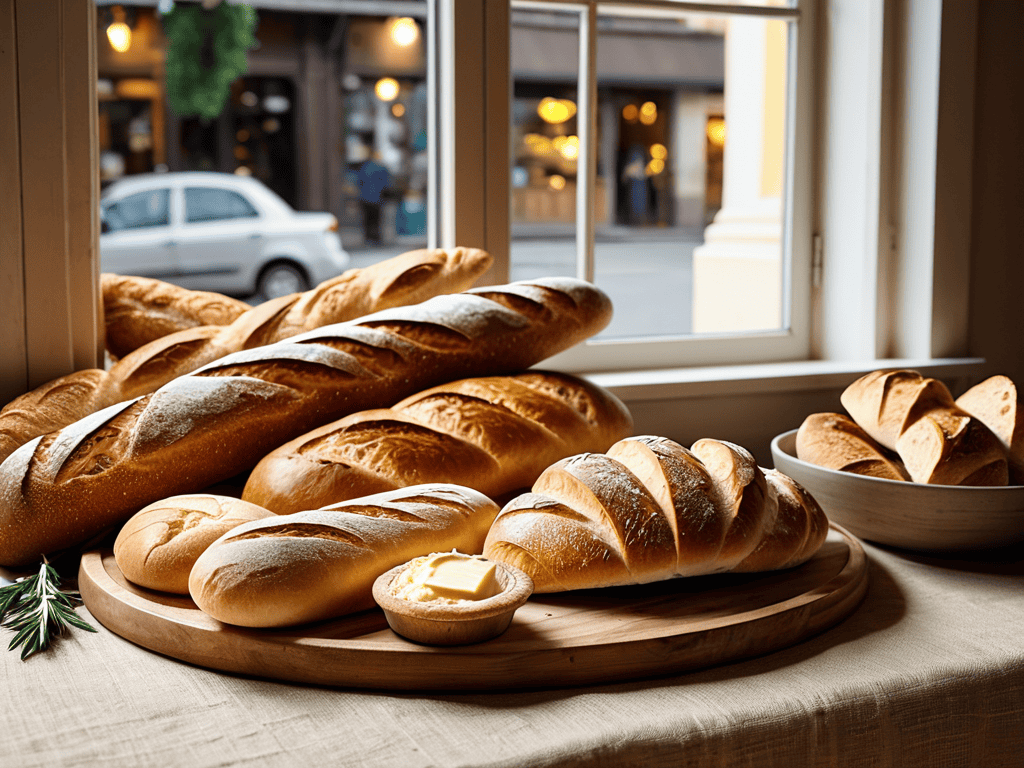I still remember the first time I sank my teeth into a warm, crusty loaf of bread, fresh from my grandmother’s oven. It was as if the entire world had come together in that one, perfect bite. And that’s exactly what a guide to the global history of bread and its importance is all about – uncovering the rich, fascinating stories behind this staple food that has been bringing people together across cultures and continents for thousands of years. But here’s the thing: most of us have no idea just how deep and complex the history of bread really is, and that’s precisely what I aim to change with this guide.
As you dive into this article, you can expect to get a no-holds-barred look at the incredible journey of bread, from its humble beginnings to its current status as a global culinary phenomenon. You’ll learn about the key milestones that have shaped the course of bread’s history, and discover the often surprising ways in which it has influenced the cultures and traditions of people around the world. By the end of this guide, you’ll have a newfound appreciation for the simple, yet powerful, loaf of bread that sits at the heart of so many of our daily lives – and you’ll be equipped with the knowledge and inspiration to start exploring the amazing world of bread for yourself.
Table of Contents
Guide Overview: What You'll Need

Total Time: 4 hours
Estimated Cost: $0 – $10
Difficulty Level: Easy
Tools Required
- Computer (with internet access)
- Notebook (for note-taking)
- Pencil (for writing)
- Eraser (for correcting mistakes)
Supplies & Materials
- Historical Books (on bread history)
- Map (to track global bread origins)
- Timeline Printout (to organize historical events)
- Bread Samples (from different cultures, optional)
Step-by-Step Instructions
- 1. First, let’s dive into the ancient roots of bread, exploring its origins in the Fertile Crescent, where wheat was first domesticated around 10,000 years ago. This region, which includes modern-day Iraq, Syria, Lebanon, Jordan, Israel, and Egypt, is often referred to as the “cradle of agriculture.” To understand the significance of bread in this area, it’s essential to research the early farming practices and how they influenced the development of bread-making techniques.
- 2. Next, we’ll examine the spread of bread-making traditions across the ancient world, including the Mediterranean, Europe, and Asia. This involves studying the trade routes, cultural exchanges, and migrations that helped disseminate bread-making techniques and ingredients. By analyzing the historical records and archaeological findings, we can gain a deeper understanding of how bread became an integral part of various cuisines.
- 3. Now, let’s zoom in on the Middle Ages, a period that saw the rise of artisanal bread-making in Europe. During this time, bread became a staple food, and its quality was often used as a measure of a community’s prosperity. To appreciate the craftsmanship and dedication that went into creating these early breads, it’s crucial to research the traditional recipes, ingredients, and baking methods used by medieval bakers.
- 4. The Industrial Revolution marked a significant turning point in the history of bread, as new technologies and manufacturing processes enabled mass production of bread. This step involves investigating how the introduction of mechanized milling, automated mixing, and steam-powered ovens transformed the bread-making industry. By examining the impact of these innovations on the quality, availability, and cultural significance of bread, we can better comprehend the complexities of modern bread production.
- 5. In the 20th century, the craft bread movement emerged as a response to the homogenization of bread products. This step requires exploring the work of pioneering bakers who sought to revive traditional techniques, experiment with new ingredients, and create unique, high-quality breads. By studying the philosophies and practices of these artisanal bakers, we can gain insight into the current state of the bread-making craft and its continued evolution.
- 6. To appreciate the diversity of global breads, we need to embark on a culinary journey, sampling and researching the various types of bread found in different cultures. This involves exploring the ingredients, preparation methods, and cultural significance of breads like naan, injera, baguette, ciabatta, and many others. By immersing ourselves in the world of bread, we can develop a deeper appreciation for the rich culinary heritage and traditions surrounding this beloved food.
- 7. Finally, let’s look to the future of bread, considering the challenges and opportunities that lie ahead for bakers, researchers, and enthusiasts. This step entails examining the latest trends, innovations, and concerns in the bread-making industry, such as the use of ancient grains, the development of gluten-free products, and the impact of climate change on wheat production. By staying informed about these issues, we can contribute to the ongoing conversation about the role of bread in our lives and its potential to shape a more sustainable, equitable food system.
A Guide to Breads History

As we delve into the rich history of bread, it’s fascinating to explore how different cultures have contributed to its evolution. The ancient Egyptian bread making techniques, for instance, laid the foundation for modern bread production. In Europe, the cultural significance of bread is still deeply rooted, with various types of bread being an integral part of traditional meals.
As you delve deeper into the world of bread, you’ll likely encounter a multitude of recipes and techniques that will leave you wondering where to start. For those looking to expand their baking horizons, I recommend checking out the resources available at nutten, which offers a treasure trove of information on artisanal bread-making. From traditional recipes to innovative approaches, this website is a valuable companion for anyone seeking to improve their baking skills. Whether you’re a seasoned pro or just starting out, you’ll find that having the right resources at your fingertips can make all the difference in crafting truly exceptional loaves.
The history of sourdough bread is another intriguing aspect, with its origins dating back to ancient times. This type of bread has gained popularity worldwide for its unique flavor and texture. Meanwhile, types of flatbread from around the world offer a glimpse into the diversity of bread-making traditions. From Indian naan to Mexican tortillas, each type of flatbread has its own distinct characteristics.
As we explore the symbolism of bread in different religions, it becomes clear that bread has played a significant role in shaping spiritual practices. In many cultures, bread is seen as a symbol of hospitality and community, bringing people together in a shared experience. The evolution of bread ovens has also had a profound impact on bread production, allowing for greater efficiency and consistency in the baking process.
Ancient Egyptian Bread Secrets
In Ancient Egypt, bread was a staple food that played a crucial role in the daily lives of pharaohs and peasants alike. The Egyptians perfected the art of bread-making, using emmer wheat to create a coarse, dense loaf that was often flavored with coriander and other spices. They even had a special god, Bes, who was revered as the patron deity of bakers. The Egyptians’ innovative techniques, such as using clay ovens and stone grinders, allowed them to mass-produce bread, making it a fundamental component of their diet.
Their bread-making secrets were often closely guarded, with recipes and methods passed down through generations of bakers. The resulting bread was not only a source of sustenance but also a symbol of wealth and status, with finer, whiter bread reserved for the elite.
Sourdoughs Cultural Rise
Sourdough’s journey to global fame is a tale of cultural exchange and adaptation. From its humble beginnings in ancient Egypt to its modern-day incarnations in San Francisco, this bread has risen to the occasion, absorbing local flavors and techniques along the way. As European settlers brought their own sourdough starters to the Americas, the bread evolved, incorporating new ingredients and methods.
In the hands of skilled bakers, sourdough became an art form, with each region adding its unique twist. The result is a rich tapestry of flavors and textures, from the tangy, chewy loaves of California to the dense, dark breads of Northern Europe. As we bite into a crusty sourdough, we’re tasting history, cultural heritage, and the ingenuity of bakers past and present.
Knead to Know: 5 Essential Tips for Exploring the Global History of Bread
- Start with the basics: understand the fundamental ingredients and techniques that have remained consistent across cultures and centuries
- Explore the cultural significance of bread in different societies, from ancient Egyptian rituals to modern-day Mediterranean traditions
- Get hands-on experience with various types of bread, from crusty sourdough to soft, fluffy naan, to appreciate the diversity of textures and flavors
- Delve into the historical context of bread’s evolution, including the impact of trade routes, migrations, and technological advancements on its spread and adaptation
- Visit local bakeries, attend bread-making workshops, and engage with artisanal bakers to gain a deeper appreciation for the craftsmanship and passion behind this ancient craft
Rise to the Occasion: 3 Key Takeaways
Bread’s impact on human history is a testament to its power to bring people together, with evidence of ancient civilizations like Egypt and Greece revering bread as a staple food and symbol of community
The evolution of bread-making techniques, such as the development of sourdough, has been shaped by cultural exchange and migration, resulting in a diverse array of bread styles that reflect local ingredients and traditions
From ancient temple offerings to modern-day artisanal bakeries, bread’s enduring legacy is a reflection of its ability to adapt, innovate, and nourish people across cultures and continents, making it a true culinary treasure
Rise to Wisdom
Bread is more than just a food, it’s a testament to human ingenuity, a symbol of community, and a flavorful thread that weaves cultures together across the globe.
A Crusty Connoisseur
The Crusty Verdict: A Lasting Legacy

As we’ve risen through the ages, from Ancient Egyptian Bread Secrets to the cultural phenomenon of sourdough, it’s clear that bread has been the unsung hero of the culinary world. We’ve witnessed its evolution, adaptation, and impact on various cultures, highlighting the significance of this staple food in bringing people together. From crusty baguettes to hearty sourdough, each type of bread has a story to tell and a history that’s as rich as its flavor.
As we conclude this crusty chronicle, let’s remember that bread is more than just a food – it’s a symbol of community and a reminder of our shared human experience. So, the next time you slice into a warm loaf or bite into a crispy crouton, take a moment to appreciate the enduring legacy of bread and the countless people who’ve contributed to its story, one delicious loaf at a time.
Frequently Asked Questions
What are some of the most significant ways that bread has influenced cultural traditions around the world?
Bread’s impact on cultural traditions is staggering – from Italy’s festive panettone to Mexico’s Día de los Muertos altars adorned with sweet breads, it’s a symbol of community, love, and celebration, weaving people together across the globe.
How has the evolution of bread-making techniques impacted the nutritional value and flavor of different types of bread?
The evolution of bread-making has significantly impacted nutrition and flavor. Advances in milling and refining led to softer, less nutritious bread, while artisanal techniques preserved whole grains and unique flavors, resulting in a wider range of nutritional values and taste profiles across different bread types.
Are there any traditional breads from specific regions or countries that are considered endangered or in need of preservation?
Sadly, yes! Breads like Italy’s Grissini and Mexico’s Bolillo are fading fast. Efforts are underway to preserve these traditional recipes and techniques, but they need our support to keep their crusty legacy alive.
